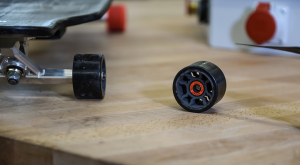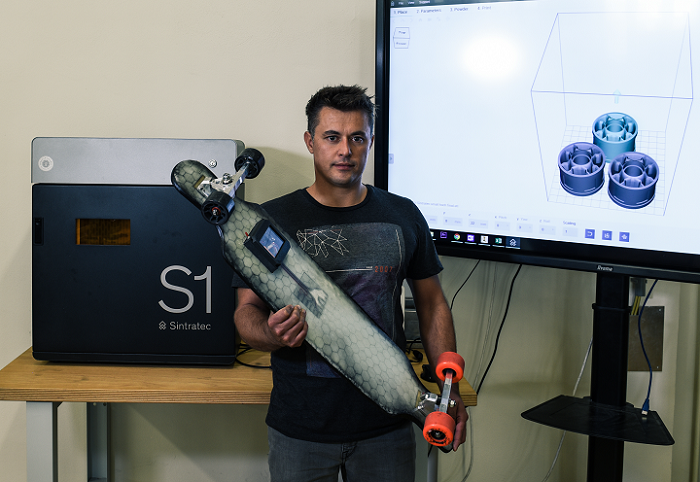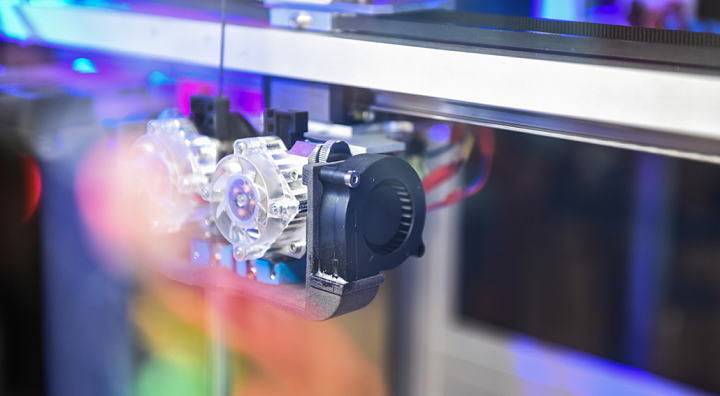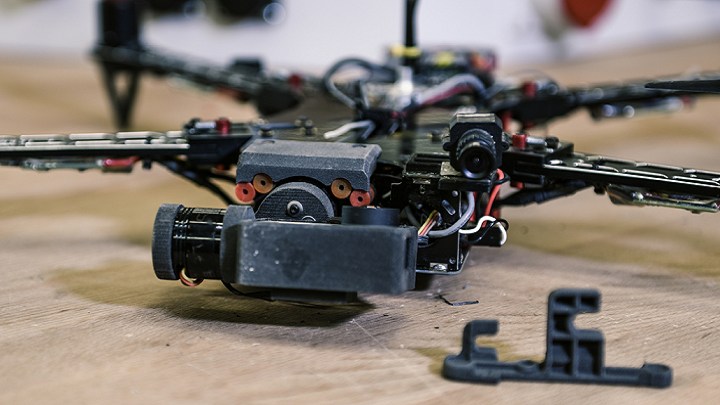The Higher Technical Federal Teaching and Research Institute Dornbirn (HTL Dornbirn), or Höhere Technische Bundeslehr- und Versuchsanstalt Dornbirn in its native Austrian, is a vocational school for adolescents from the ages of 14 and up, and offers a wide range of subjects from chemistry, logistics, and economics to fashion, computer science, and technology. As the roughly 1,000 students are there to prepare for higher education and their future careers, the 140 teachers at the school make sure to show them just how important modern technology, like 3D printing, can be, in terms of both application and understanding.
Professor Harald Walzl, a Graduate Engineer who leads mechanical workshops and specialist groups in the field of business and engineering at HTL Dornbirn, introduced the school to Swiss 3D printer developer and manufacturer Sintratec and its selective laser sintering (SLS) 3D printing technology.
“There is a great demand for our graduates on the job market because of our practical focus. The broad technical skills of our students form a solid basis,” Walzl said.
“We must not oversleep technology. Therefore, we promote it specifically at our institute. And it is really popular!”
He set the school up with the desktop Sintratec S1, and was so satisfied with the results that a Sintratec Kit was also purchased for HTL Dornbirn students to use, so that they can 3D print flexible parts out of thermoplastic elastomer (TPE).
Walzl said, “The combination of the dimensionally stable Sintratec PA12 we use in the Sintratec S1 and the elastic Sintratec TPE optimal.
“For us, the Sintratec 3D printing systems combine the important aspects of learning, realizing and maintaining.”
Walzl believes that SLS technology is the best choice for the school, as it can be used to create functional parts which can be used right off the print bed. Additionally, Sintratec’s technology in particular offers benefits to the school through its “redundant support structures” and the “high chemical, mechanical and thermal resilience” of its 3D printing materials. Both of the Sintratec 3D printers used at the school also come with a very attractive package.
“We are talking about an excellent mix of acquisition cost, performance and user-friendliness as well as the services of the motivated Sintratec team,” Walzl said.
 While it’s especially important in technical and vocational schools to teach students about additive manufacturing, the technology can also be used in any school setting to more easily explain complex topics. In addition, 3D printing can give students more creative freedom for school projects so they’re able to experiment.
While it’s especially important in technical and vocational schools to teach students about additive manufacturing, the technology can also be used in any school setting to more easily explain complex topics. In addition, 3D printing can give students more creative freedom for school projects so they’re able to experiment.
At HTL Dornbirn, the main users of the Sintratec S1 3D printer are the so-called ‘future tecs,’ such as students training to become mechanical or business engineers. Recently, students have used the 3D printer to create rims for skateboard wheels, and some even developed quadcopter parts, such as a gimbal, for major school projects.
“These kind of print jobs can be realized easily,” Walzl explained. “The technology is suitable especially for projects containing a small number of pieces.”
But students aren’t the only people at the school finding uses for Sintratec’s technology. Some other departments at HTL Dornbirn are turning to 3D printing for maintenance tasks, in addition to fabricating spare parts for workshops and various lab equipment.
“We are a practical education site, where things happen to break from time to time,” Walzl said. “Therefore, in-house requests are coming regularly, whether for battery caps, hooks or other devices, that cannot be replaced by spare parts since they do not exist anymore. In such cases we model the objects in a CAD system and print them.”
For Walzl, the importance of 3D printing in schools is centered around the technology’s ability to help students nurture innovation, provide insight in digitalization, and truly visualize product design all the way through.
“Realizing construction designs in a fast way is definitely something to recommend,” Walzl said.”
Will more schools opt for SLS systems in the future? At the moment the educational market is nearly entirely dominated by Fused Deposition Modeling (material extrusion, FDM, FFF). This technology is easier and cheaper to use than SLS. If SLS systems become safer will people opt to go that route more often? Or will educators worry about powder residue and issues with inhaling the fine SLS powder?
Discuss 3D printing in schools and other 3D printing topics at 3DPrintBoard.com or share your thoughts in the Facebook comments below.
[Source/Images: Sintratec]Subscribe to Our Email Newsletter
Stay up-to-date on all the latest news from the 3D printing industry and receive information and offers from third party vendors.
You May Also Like
3D Printing Unpeeled: New Arkema Material for HP, Saddle and Macro MEMS
A new Arkema material for MJF is said to reduce costs per part by up to 25% and have an 85% reusability ratio. HP 3D HR PA 12 S has been...
3D Printing News Briefs, January 20, 2024: FDM, LPBF, Underwater 3D Printer, Racing, & More
We’re starting off with a process certification in today’s 3D Printing News Briefs, and then moving on to research about solute trapping, laser powder bed fusion, and then moving on...
3D Printing Webinar and Event Roundup: December 3, 2023
We’ve got plenty of events and webinars coming up for you this week! Quickparts is having a Manufacturing Roadshow, America Makes is holding a Member Town Hall, Stratafest makes two...
Formnext 2023 Day Three: Slam Dunk
I’m high—high on trade show. I’ve met numerous new faces and reconnected with old friends, creating an absolutely wonderful atmosphere. The excitement is palpable over several emerging developments. The high...


































